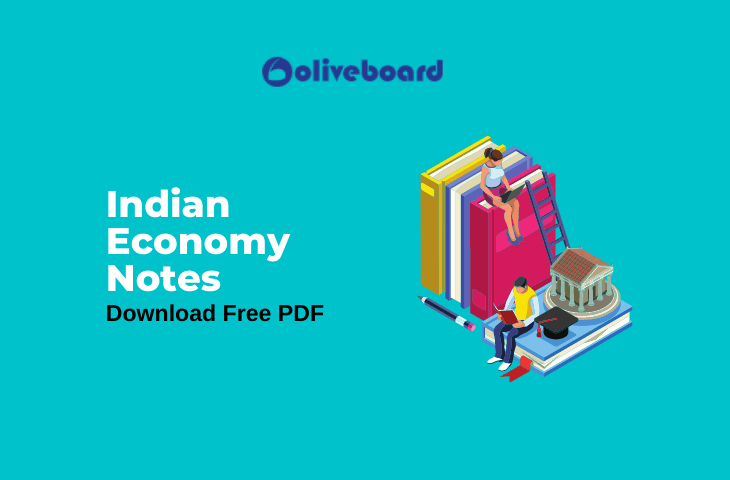Questions on the Indian economy are commonly asked in different SSC, Railway & other government exams. It is one of the most important sections of General Knowledge. Get complete Indian Economy notes in this blog.
There are mainly three types of economic systems.
- Capitalistic Economy: In this system all the means of production, and distribution are privately owned and this is a profit oriented system
- State Economy: Characteristic feature of this system is the social ownership of means of production and distribution. There are two main varieties in this too, Socialist economy and Communisteconomy.
- Mixed Economy: Here some of the means of production and distribution are socially owned and some are privately owned. It is actually a mix of the first two types of systems. India falls under this category.
All the economic activities in a country, can be classified into three sectors. - Primary Sector: Includes allthose economic activities, where there is the direct use of natural resources. For example agriculture, mining, fishing, etc. all comes under this sector. 49% of Indian population is employed under the Primary sector and its contribution to National Income is around 19%. Making per capita income of people employed here, very low.
- Secondary Sector: Also known as ‘manufacturing sector’, and this includes all those activities, where direct use out of the primary sector is involved. All industries make this sector and hence also known as industrial sector.
- Tertiary Sector: Includes all ‘service’ related economic activities, like banking, education, tourism etc. Hence this sector is also known as ‘service sector’. Around 27% of our population is employed here, and its contribution to National Income is 49%, making the per capita income of people employed here, much more than that of the people employed in primary sector.
Planning in India:
Planning may be defined as a process of realizing well-defined goals by optimum utilization of the available resources. In India, we are following five-year plans, adopted from the ‘nation planning concept of Soviet Union’.
The first five-year plan rolled out in 1951, for a period of 1951-56 and presently we are in the 12th five-year plan (2012-17). To look into all aspects of planning a national level body, Planning Commission was formed in 1950, through a cabinet resolution. But in early 2015, this institution has been scrapped and another institution, NITI (National Institution for Transforming India) Aayog was set up. NITI will act as a think tank and hope to adopt a bottom-top approach.

How To Download The Free e-book?
- Click on the link given above
- Register or Login to your Oliveboard Dashboard
- Click on “click here” as shown in the image below to download file.

Step 2: Register/Login on to the Free E-Books Page of Oliveboard (It is 100% free, You just enter your valid email ID and a password to be able to download the free Indian economy Notes pdf.
Step 3: After Logging in, you will be able to download the free e-book.
Ebooks
You can download 200+ ebooks important for SSC, Banking, Railway, Insurance, and other government exams here.
Oliveboard Bolt series E-books:
- Oliveboard Bolt – General Awareness
- Bolt – Monthly Current Affairs PDF
- Banking Bolt – Free E-book for Banking Awareness
- Economy Bolt – Free E-book for Economy
Oliveboard Live Courses & Mock Test Series
- IBPS Clerk 2021 Mock Test: Attempt Now
- SBI Clerk 2021 Mock Test: Attempt Now
- IBPS RRB PO 2021 – Attempt Free Mock Test Here
- IBPS RRB Clerk 2021 – Attempt Free Mock Test Here
- यहाँ पर नि: शुल्क राजस्थान पुलिस एसआई मॉक टेस्ट के लिए रजिस्टर करें
Hi, I’m Tripti, a senior content writer at Oliveboard, where I manage blog content along with community engagement across platforms like Telegram and WhatsApp. With 3 years of experience in content and SEO optimization, I have led content for popular exams like SSC, Banking, Railways, and State Exams.
